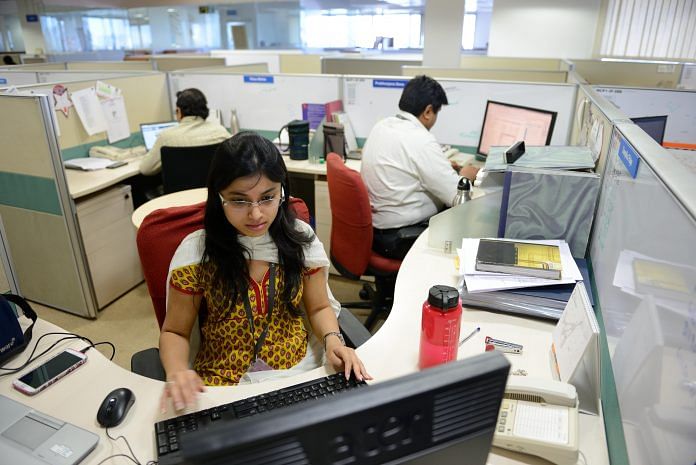Stressing the adverse impact of these numbers on the overall health of the workplace, the survey noted that ‘there is steady and consistent thinning of female workforce on the way up’.
New Delhi: Despite making significant strides in many areas, women still hold few leadership positions in Indian companies, a gender parity survey by the Federation of Indian Chambers of Commerce and Industry has found.
The survey, a first-of-its-kind index compiled by the FICCI Ladies Organisation (FLO), sought to measure the extent of gender parity in organisations in India’s formal sector.
According to the study, only 6 per cent of the respondent organisations reported equal representation of men and women among their independent directors, while 31 per cent said less than 5 per cent of senior management positions were held by women.
Stressing the adverse impact of these numbers on the overall health of the workplace, the survey noted that “there is steady and consistent thinning of female workforce on the way up the seniority ladder”.
“Such thinning-out sends nonverbal signals that the organisation does not proactively create a conducive environment for real career growth and that there is a distinct glass ceiling for (the) female workforce,” it added.
Defence minister Nirmala Sitharaman, the first woman in India to hold the position full-time, released the survey Monday in New Delhi. Talking about the low representation of women in leadership positions, Sitharaman said, “Still, very few women are on the boards of various companies. Women on (the) board can bring in lots of change and bring in reforms and transparency in the corporates.”
Services sector ‘the best performer’
While none of the three sectors surveyed (manufacturing, services and trading) scored high, the services sector consistently outperformed the other two in terms of the number of women employed, representation across departments, and functions, promotions, etc.
“Clearly, trading and manufacturing continue to be unattractive propositions for women, or, employers are consciously not employing women,” the survey said.
However, the study did throw up one uplifting finding, with the majority of the respondents – 66 per cent – saying pay among men and women was equal at the same job level. Only in the manufacturing sector were men reported to earn over twice as much as women at the same level. The sector also fared the worst in terms of women in leadership positions.
‘Gender sensitisation only on paper’
Despite outperforming manufacturing and trading in most dimensions, the services sector registered the worst performance regarding aspects like sexual harassment and gender sensitisation.
Alarmingly, 42 per cent of all respondents said they did not have a policy on gender sensitisation, with the services sector accounting for almost 70 per cent of these.
Even in organisations where gender sensitisation policies were in place, programmes to implement and promote them were rare. Clearly, most organisations with favourable policies and/or execution and review were performing better due to statutory requirement, and not necessarily to create a gender-sensitised workforce, the survey said.
In India, the female labour force participation (FLFP, the percentage of women working or looking for a job, as a share of the total population of working-age women) has been steadily declining over the last decade, with the FLFP at 28.7 per cent in 2017, as opposed to 53.9 per cent the world over.



